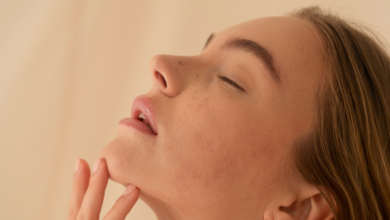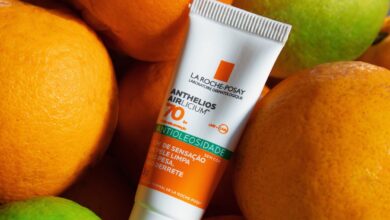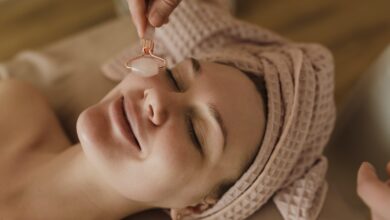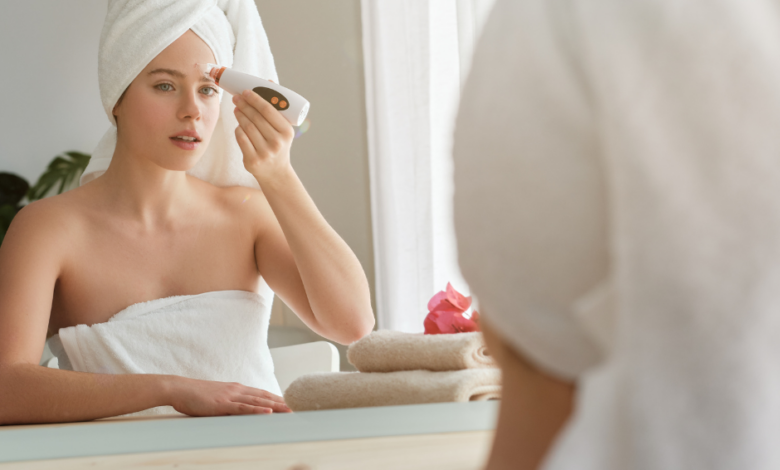
Diving into the world of skincare, we’ve all heard how crucial deep pore cleansing is for that dreamy, flawless skin. So, let’s embark on a journey together to explore the best techniques to keep your pores in tip-top shape. We’re talking about the whole shebang – from finding that perfect cleanser that gets right into the nitty-gritty of your pores to mastering the art of exfoliation. Whether you’re a die-hard skincare fanatic or just stepping up your beauty game, this guide is your ticket to understanding how to give your skin the love and deep clean it deserves. Get ready to unlock the secrets to a radiant complexion and healthier skin!
Understanding the Importance of Deep Pore Cleansing
Clean and clear skin is the epitome of beauty, and deep pore cleansing plays a crucial role in achieving and maintaining healthy-looking skin. To truly understand the significance of deep pore cleansing, it is essential to first comprehend what pores are and why they require special attention. Additionally, we will explore common skin issues that can arise due to clogged pores.
What are Pores?
Pores are tiny openings on the surface of the skin that allow the release of sweat and sebum, the oil produced by the sebaceous glands. These glands are located beneath the skin and are responsible for keeping it moisturized. Pores also serve as a gateway for hair follicles to emerge. Although pores are necessary for the skin’s natural functions, they can sometimes become problematic when they become clogged.
Why is Deep Pore Cleansing Important?
Deep pore cleansing is vital for maintaining healthy skin and preventing several skin issues. When pores become clogged with excess oil, dead skin cells, and other impurities, they can enlarge and become more visible. This can lead to the formation of blackheads, whiteheads, and acne. By regularly performing deep pore cleansing, you can effectively remove these impurities, reduce the appearance of enlarged pores, and improve overall skin texture.
Common Skin Issues Associated with Clogged Pores
Clogged pores can result in a range of skin issues that can be both frustrating and uncomfortable. Some common problems include:
- Blackheads: When oil and dead skin cells clog the pores and are exposed to air, they oxidize and turn black, resulting in blackheads. These small dark spots often appear on the nose, chin, and forehead.
- Whiteheads: Similar to blackheads, whiteheads are also caused by clogged pores. However, they remain closed under the skin’s surface, giving them a white or flesh-colored appearance.
- Acne: Clogged pores can contribute to the development of acne. The accumulation of oil, bacteria, and dead skin cells can lead to inflammation, redness, and the formation of painful pimples.
- Enlarged Pores: When pores are frequently clogged, they can stretch and become enlarged. This can make them more noticeable and give the skin an uneven texture.
Now that we have established the importance of deep pore cleansing, let’s explore the different methods and techniques to achieve this.

Different Methods of Deep Pore Cleansing
Various methods can be employed to deep cleanse your pores effectively. Each technique has its own unique benefits, and choosing the right approach depends on your skin type and personal preference. Let’s explore some common methods:
1. Manual Extraction Techniques
Manual extraction techniques involve physically removing impurities from the pores using tools like comedone extractors or your fingertips. This method can be effective for removing blackheads and whiteheads, but it requires caution and should be performed by a professional to avoid skin damage or infection.
2. Chemical Exfoliation
Chemical exfoliation involves the use of mild acids or enzymes to dissolve dead skin cells and unclog pores. Common chemical exfoliants include alpha-hydroxy acids (AHAs) and beta-hydroxy acids (BHAs). These exfoliants can penetrate the pores and help prevent the buildup of oil and debris. However, it is important to properly follow the instructions and not overuse these products, as they can cause skin irritation and sensitivity.
3. Steam Treatment
Steam treatments are a popular method for deep pore cleansing, as they effectively open up the pores and help loosen impurities. By steaming your face, you can enhance the effectiveness of other cleansing techniques, such as manual extraction or facial masks.
4. Facial Cleansing Brushes
Facial cleansing brushes are electronic devices designed to provide a deep and thorough cleanse. These brushes have gentle bristles that rotate or vibrate to exfoliate the skin and remove dirt, makeup, and dead skin cells. They can be used with a cleanser to effectively clean the pores and promote a smoother complexion.
5. Clay Masks
Clay masks are an excellent option for deep pore cleansing, especially for those with oily or acne-prone skin. These masks contain ingredients like kaolin or bentonite clay, which absorb excess oil and draw out impurities from the pores. Clay masks can also help tighten the skin and reduce the appearance of enlarged pores.
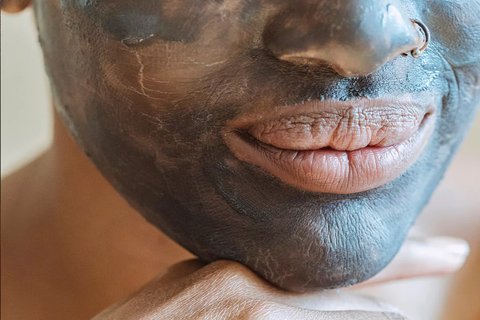
Now that you are familiar with the different methods of deep pore cleansing, let’s explore some tips to ensure a more effective cleansing experience.
Tips for Effective Deep Pore Cleansing
While performing deep pore cleansing, following certain guidelines can help maximize the effectiveness and minimize any potential skin irritation. Here are some key tips to keep in mind:
1. Start with Clean Hands and Face
Before you begin any deep pore cleansing technique, ensure that your hands and face are thoroughly clean. Use a gentle cleanser to remove any dirt, makeup, or impurities from the skin. This step helps prevent the transfer of additional bacteria or dirt onto the skin during the cleansing process.
2. Pick the Right Cleansing Products
Choosing the right cleansing products is crucial for deep pore cleansing. Look for gentle cleansers that are specifically formulated for your skin type. Avoid products that contain harsh ingredients, such as sulfates or alcohol, as they can strip the skin of natural oils and disrupt the skin’s moisture balance.
3. Be Gentle and Avoid Over-Scrubbing
While it can be tempting to aggressively scrub the skin during deep pore cleansing, it is important to be gentle and avoid over-scrubbing. Scrubbing too vigorously can irritate the skin, potentially causing redness and inflammation. Instead, use gentle circular motions and allow the cleansing products or tools to do the work.
4. Pay Attention to Frequency
The frequency of deep pore cleansing depends on your skin type and individual needs. While it is important to maintain clean pores, over-cleansing can disrupt the skin’s natural protective barrier and cause dryness or irritation. Generally, deep pore cleansing 2-3 times a week is sufficient for most people, but adjust the frequency based on your skin’s response.
5. Use Pore-Cleansing Tools Properly
If you opt to use pore-cleansing tools such as comedone extractors or facial brushes, ensure you are using them correctly. Improper use can lead to skin damage or infection. Follow the instructions provided with the tools, or better yet, seek the assistance of a professional esthetician for safe and effective use.

Professional Deep Pore Cleansing Options
While at-home deep pore cleansing methods can be effective, professional treatments offer a more thorough and targeted approach. If you have specific skin concerns or are seeking a deeper cleanse, consider the following professional options:
1. Microdermabrasion
Microdermabrasion is a non-invasive cosmetic procedure that involves exfoliating the outermost layer of the skin using a diamond-tipped wand or crystals. This treatment effectively removes dead skin cells, unclogs pores, and stimulates collagen production. It can be beneficial for improving skin texture, reducing the appearance of acne scars, and enhancing overall skin radiance.
2. Chemical Peels
Chemical peels are treatments that involve the application of a chemical solution to the skin, which causes controlled exfoliation and peeling. These peels can effectively remove dead skin cells, unclog pores, and improve skin tone and texture. Different types of peels are available, ranging from superficial to deep, and they can be customized to address specific skin concerns.
3. Hydrafacial Treatment
Hydrafacial is a non-invasive skin treatment that combines deep cleansing, exfoliation, extraction, and hydration. It utilizes a specific device to gently cleanse and extract impurities from the pores while simultaneously infusing nourishing serums into the skin. Hydrafacial is known for providing instant hydration, improving skin tone and texture, and giving the skin a radiant glow.

Natural Remedies for Deep Pore Cleansing
If you prefer a more natural approach to deep pore cleansing, several remedies can help unclog pores and promote healthier-looking skin. Here are a few natural methods you can try:
1. Oil Cleansing Method
The oil cleansing method involves using specific oils, such as jojoba oil or castor oil, to cleanse the skin. Contrary to what one might expect, oils can effectively dissolve excess sebum and remove impurities from the pores. This method is suitable for all skin types and can help balance the skin’s natural oils while providing deep cleansing.
2. DIY Facial Masks
DIY facial masks can be created using natural ingredients easily found in your kitchen. Ingredients like honey, yogurt, oatmeal, and activated charcoal can help draw out impurities from the pores and leave the skin feeling refreshed and revitalized. These masks can be tailored to address specific skin concerns, such as oily skin, acne, or dullness.
3. Steam Baths with Essential Oils
Steaming your face with essential oils is an excellent natural remedy for deep pore cleansing. Boil some water, add a few drops of essential oil (such as tea tree or lavender), and place a towel over your head to create a steam tent. Allow the steam to open up your pores and loosen any impurities, promoting a deep cleanse. Follow this up with a gentle cleanse and rinse with cool water to close the pores.
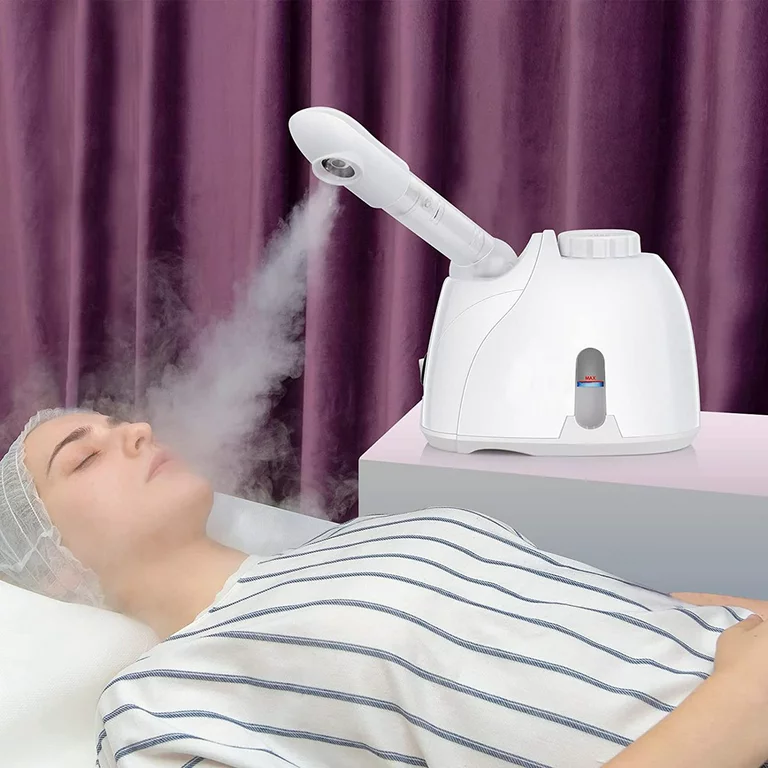
Common Mistakes to Avoid in Deep Pore Cleansing
While deep pore cleansing can offer great benefits, there are some common mistakes that should be avoided to ensure optimal results and minimize potential skin damage. Here are a few mistakes to be aware of:
1. Using Harsh Scrubs or Exfoliants
Harsh scrubs or exfoliants can cause micro-tears in the skin and lead to dryness, irritation, and inflammation. Opt for gentle exfoliants with fine particles or chemical exfoliants that are suitable for your skin type. Avoid scrubbing too vigorously or using abrasive ingredients that can damage the skin’s surface.
2. Ignoring the Importance of Moisturizing
After deep pore cleansing, it is crucial to replenish the skin’s moisture barrier by applying a suitable moisturizer. Moisturizing helps prevent dryness, maintain the skin’s natural balance, and support its overall health. Look for non-comedogenic moisturizers that won’t clog the pores.
3. Overusing Pore Strips
Pore strips can be tempting to use, but they should not become a regular part of your deep pore cleansing routine. While they can help remove some blackheads and clear the pores temporarily, overusing pore strips can cause irritation and lead to broken capillaries. Limit their usage and focus on regular cleansing methods instead.
4. Touching or Picking at Pimples
Picking at pimples, blackheads, or any other skin imperfections can worsen inflammation, spread bacteria, and cause scarring. It is important to resist the urge to touch or squeeze your skin, as this can lead to further skin issues. Instead, rely on proper cleansing techniques and seek professional help for stubborn or severe blemishes.

FAQs about Deep Pore Cleansing
Here are some frequently asked questions related to deep pore cleansing:
1. How often should I deep cleanse my pores?
The frequency of deep pore cleansing depends on individual skin type and needs. Generally, deep cleansing 2-3 times a week is sufficient for most people. However, adjust the frequency based on your skin’s response and consult with a skincare professional if necessary.
2. Can deep pore cleansing get rid of blackheads?
Yes, deep pore cleansing methods can effectively remove blackheads. Techniques like manual extraction, chemical exfoliation, and clay masks can help dislodge and remove blackheads. However, it is important to maintain a consistent cleansing routine to prevent their recurrence.
3. Are there any risks associated with deep pore cleansing?
When performed correctly and with appropriate products, deep pore cleansing is generally safe. However, aggressive scrubbing, overuse of exfoliants, and incorrect use of extraction tools can potentially damage the skin, causing irritation, inflammation, or infection. If you have sensitive skin or skin conditions, it is advisable to consult with a skincare professional before attempting deep pore cleansing.
4. Is deep pore cleansing suitable for all skin types?
Deep pore cleansing can be suitable for all skin types with proper consideration and customization. Different methods and products can be tailored to address specific needs, such as oil control for oily skin or gentle cleansing for sensitive skin. It is important to choose the right products and techniques that are suitable for your skin type and to consult with a skincare professional if necessary.
In conclusion, deep pore cleansing is a fundamental step in achieving and maintaining healthy skin. By understanding the importance of pore cleansing, exploring different techniques, following effective tips, considering professional options, and incorporating natural remedies, you can effectively combat clogged pores and promote clearer, smoother, and more radiant skin. Remember to approach deep pore cleansing with care, choose appropriate methods for your skin type, and be consistent in your skincare routine to reap the benefits of a deep clean complexion.


